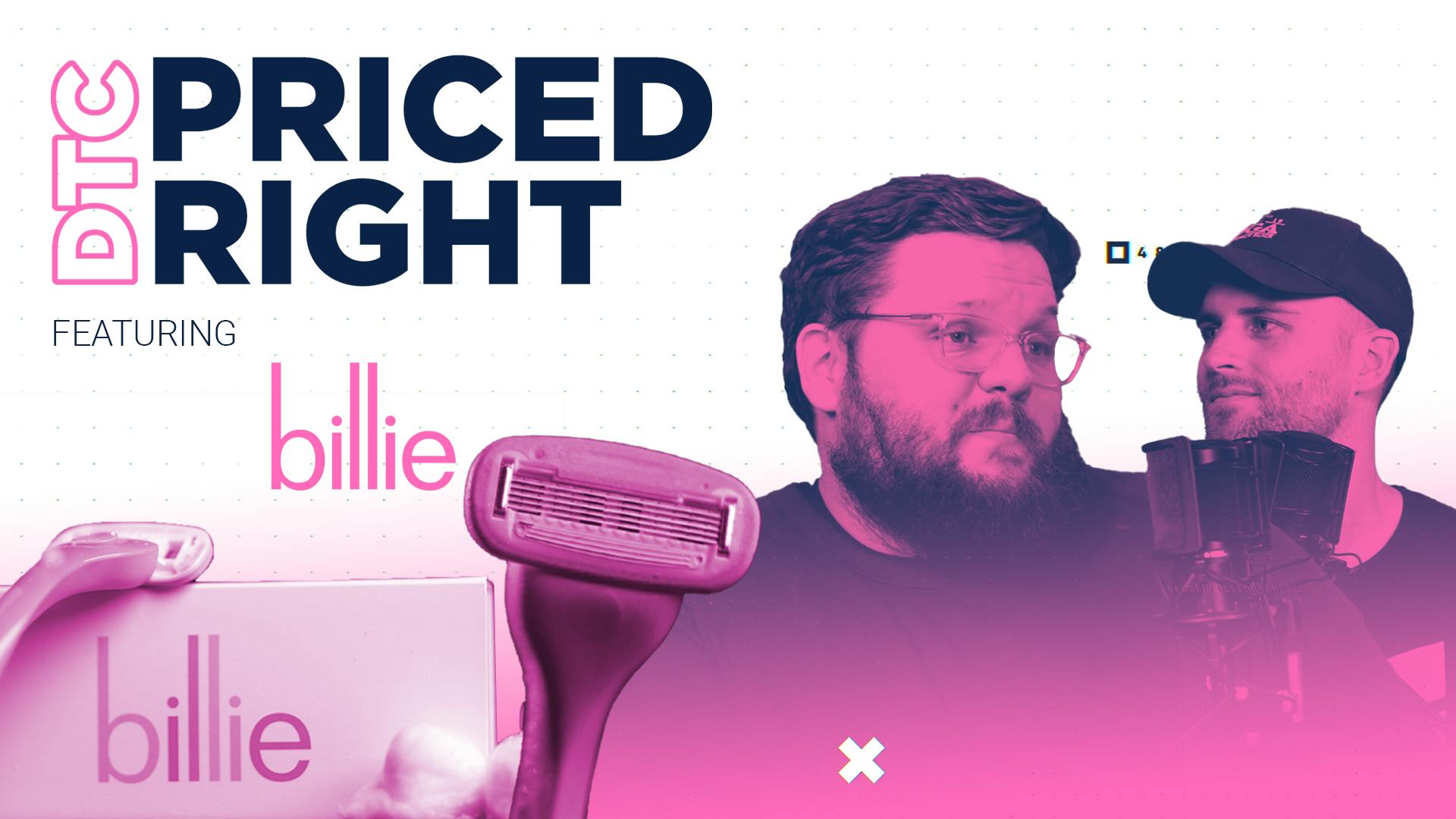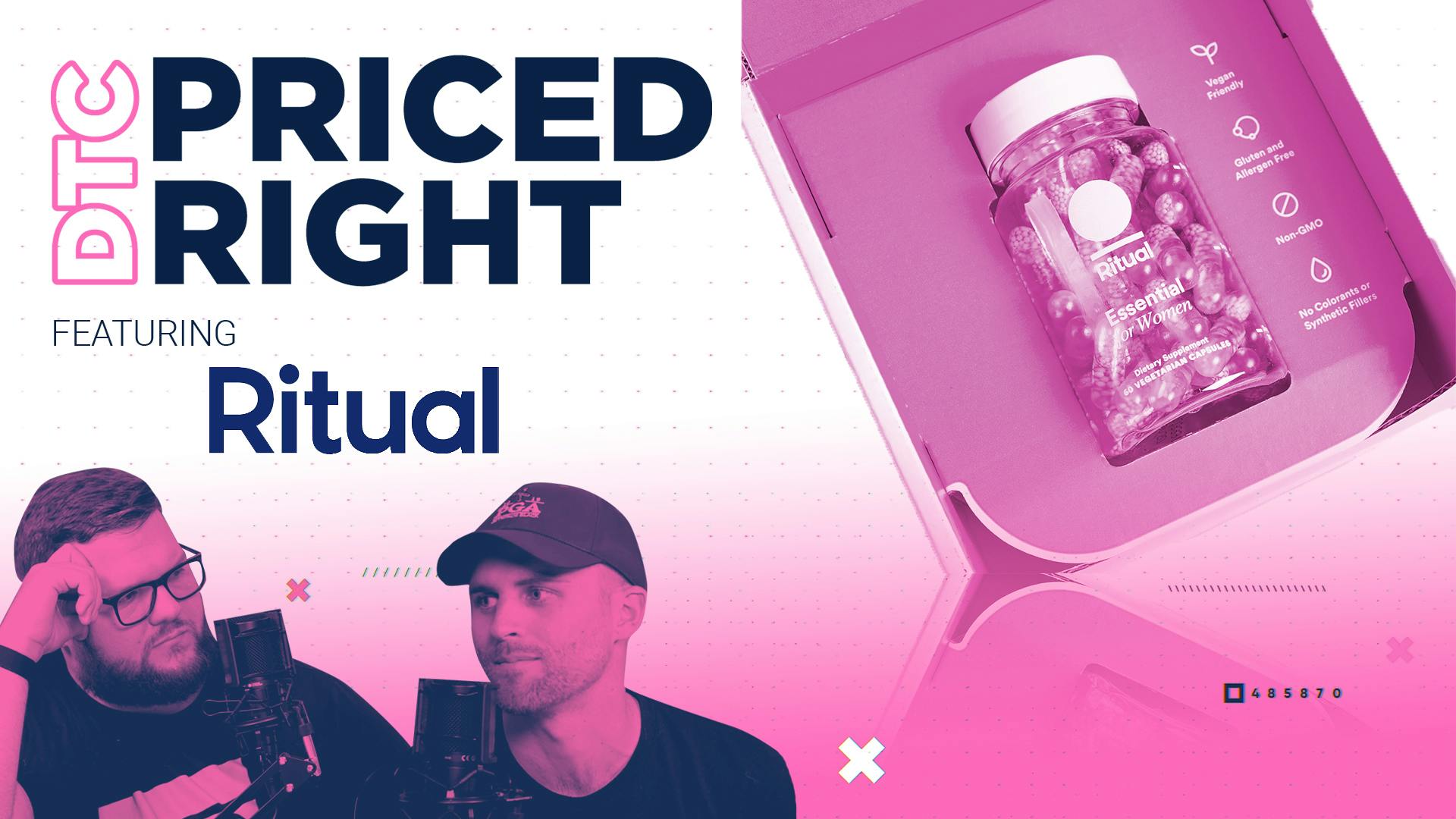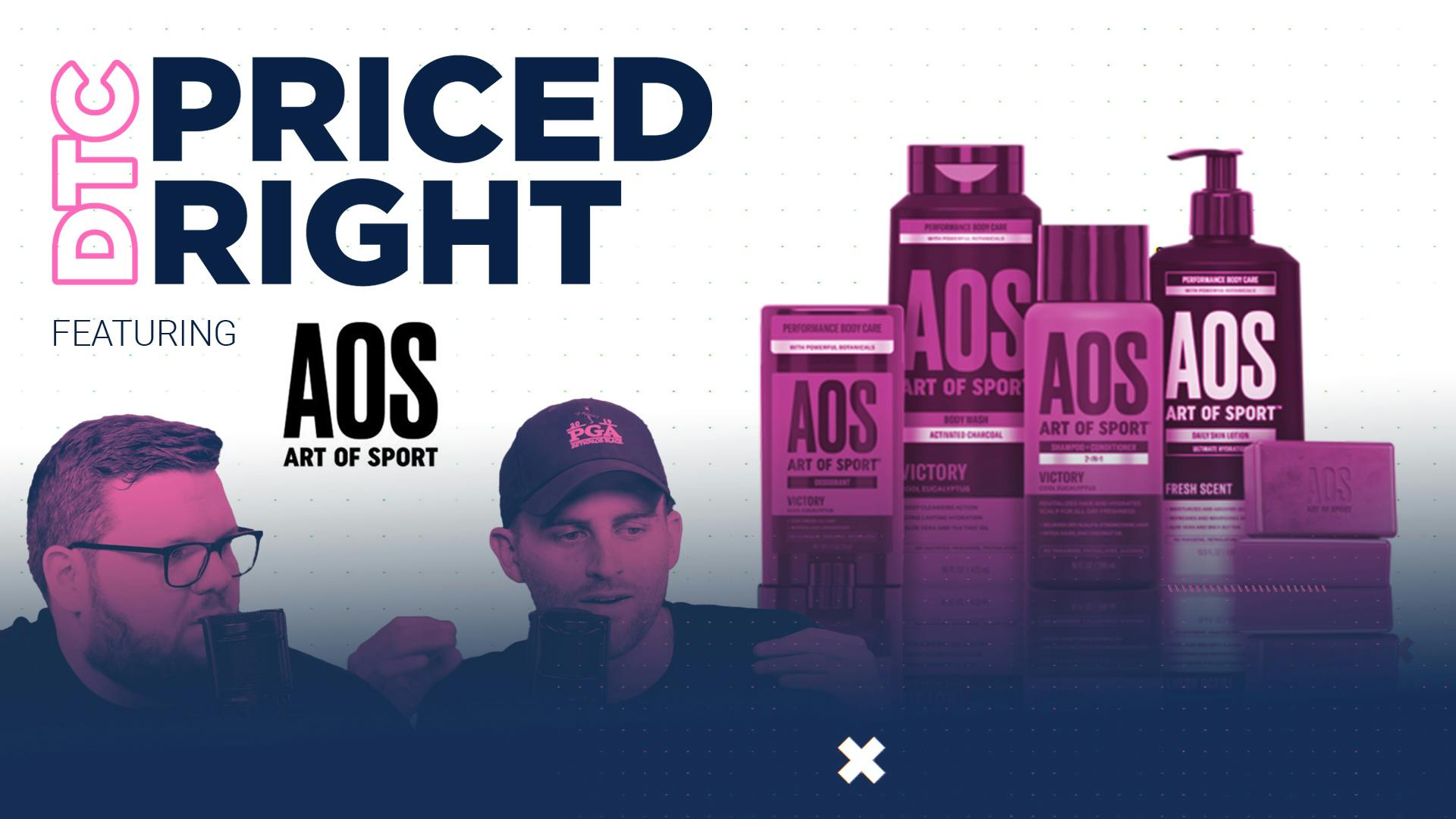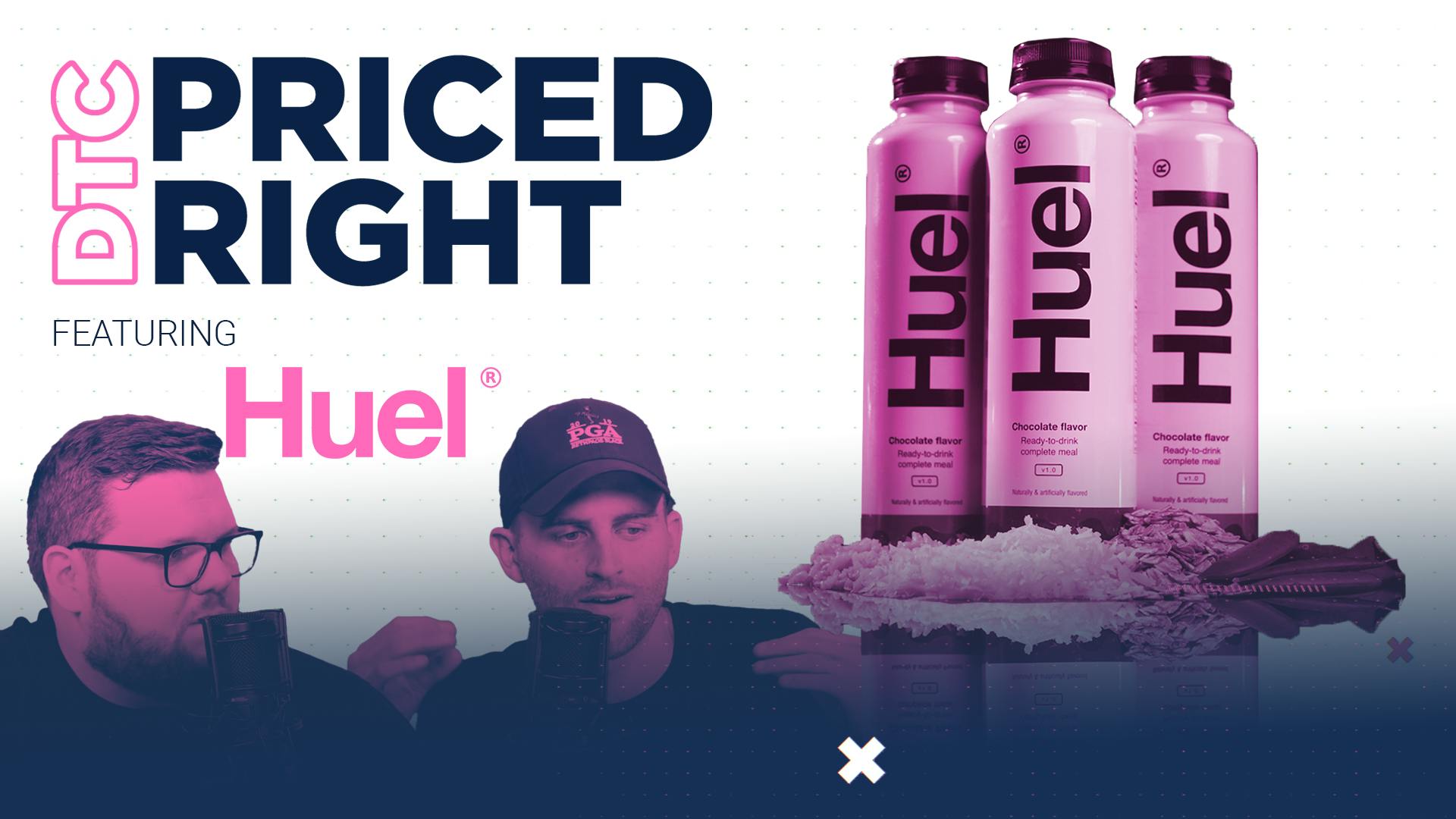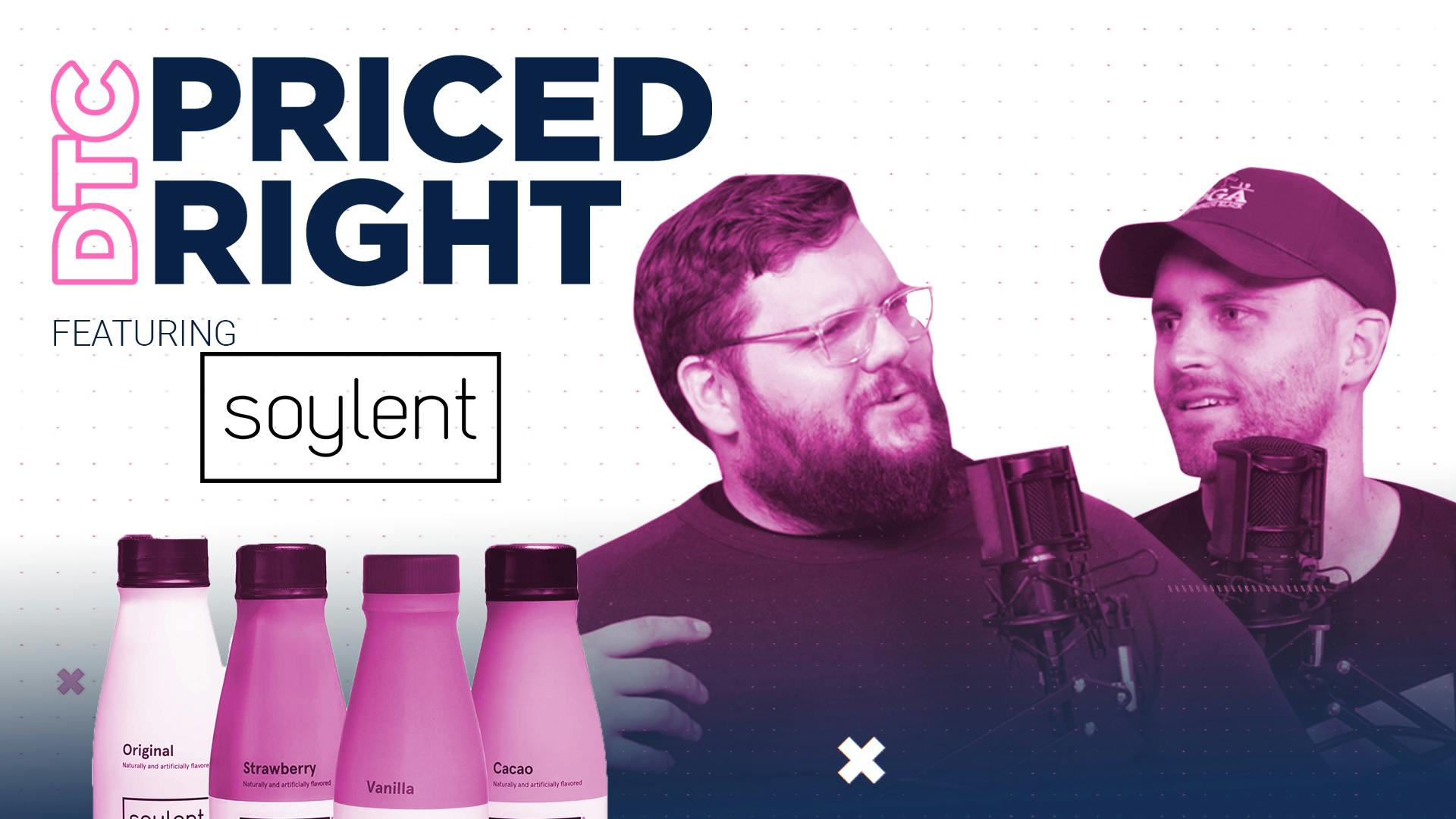
Can Bulletproof avoid the crash long term?
This episode might reference ProfitWell and ProfitWell Recur, which following the acquisition by Paddle is now Paddle Studios. Some information may be out of date.
Please message us at studios@paddle.com if you have any questions or comments!
This week we're talking about living to 180 years old, or just living our best life. We're talking about Bulletproof which Dave Asprey created out of his fascination with wanting to live longer and wanting to live a healthier and better life through supplementation, better diet, and kind of everything in between. He turned his side hobby into an empire. But we're going to be looking at what Bulletproof is doing right and wrong with their pricing, and then wrap all of those lessons into a nice case study that you can take away to get your own monetization right.
Bulletproof went from a small blog to a multi-million dollar empire by successfully challenging some massive industries. It's created a lifestyle, some even say movement, that biohackers, health fanatics, and celebrities alike, are proud to be a part of. This massive cult following proves that Bulletproof is getting a lot right. But what is it getting wrong?
Below are some valuable takeaways you can implement in your own business.
- Know which value propositions drive willingness to pay.
undefinedundefined - Quarterly, semi-annual, and annual offers help return immensely.
undefinedundefined - Don't average out your pricing.
undefinedundefinedundefined
The World Health Organization (WHO) defined health, in 1948, as a “state of complete physical, mental and social well-being.” In the 1960s, Halbert L. Dunn defined wellness as a “dynamic process where a human moves toward even higher potentials of functioning.” Essentially, health is about feeling good, and wellness is about doing something more to feel even better. Today, the health and wellness industry is a multi-trillion dollar industry. But things are shifting...
Biohacking is said to be the next generation of wellness technology moving the needle on how we can influence genes, as well as our emotional state. And biohackers have been called the new “pioneers of wellness.”
One of those biohackers, is Bulletproof founder, David Asprey. Asprey began his biohacking journey after struggling with his own health. After trying numerous diets and nothing working, he set out to “hack” his own biology. And it was during this time that he ended up on a trek in Tibet, 18,000 feet above sea level with a temperature of -10 degrees Fahrenheit, eventually leading him to stumble into a guest house where a local made him a creamy cup of yak butter tea. Instantly feeling his mind and body rejuvenated, Asprey immediately got work to figure out what in it, made him feel so good.
It took Asprey about about eight to 10 years to perfect his own version of the yak butter tea that started it all. He posted the Bulletproof coffee recipe online in 2010, and the founding of Bulletproof 360 came in 2013.
Bulletproof's success
Bulletproof’s exponential growth is attributed to two factors:
The first factor: Great content. Posting the Bulletproof recipe on Asprey’s blog in 2010 enabled it to spread from one biohacker to another on multiple online forums, slowly gathering a massive cult following that now includes celebrities.
Leading to the second factor of their growth: Great positioning. Asprey understands the power of content and uses it to grow and nurture his following to strongly position Bulletproof as the go-to brand for the biohacking lifestyle.
Bulletproof products are backed by the latest research, ancient knowledge from Ayurvedic and Chinese medicine, and an unwavering commitment to quality ingredients. Offering the purest in coffee, supplements, foods, and technologies.
Bulletproof coffee beans are high-quality beans to which care is given from soil to cup so you get a clean, great-tasting cup of coffee every time. Bulletproof beans are hand-picked and sorted, then they’re washed and processed to Bulletproof standards. Additionally, all Bulletproof beans are purchased from Rainforest Alliance Certified farms, ensuring sustainable operations.
Biohackers, health fanatics, and celebrities all love and swear by Bulletproof’s products, and are part of the massive and loyal following Bulletproof has established. Bulletproof went from a small blog to a multi-million dollar empire in a relatively short amount of time and continues to expand. With over 200 million cups of coffee served, it’s clear Bulletproof is doing a lot right. But what is it doing wrong?
Living to 180 years
Dave Asprey is an interesting character. I've listened to a decent amount of Bulletproof radio and it's kind of hard to tell when the interviewing stops and the sales pitch starts. Their about section turns into a sales pitch for the lifestyle really quick, if that makes sense. But I think that he's so passionate about longevity and he's riding the wave and kind of invented part of this next wave of wellness, where it's about energy. I have brain octane oil like every single day. I mean, I don't know, I'm not doctor, but I think they do have studies that show that certain things correlate with positive outcomes.
And I also think that a lot of what he's talking about and a lot of the Bulletproof mentality is very much the fundamentals in terms of how to eat low inflammation foods. These types of things that have been shown not only in athletes, but just the common folk that actually do correlate with longevity and things like that. We're finding so much new information about things like vitamin D. In the wake of this year, people were learning how it helps turn things into a hormone, and how it's really important for immune health, yet everyone is deficient.
There's a lot of things we're finding out now that's breaking the old school food pyramid and things like that of yesteryear. And Bulletproof is right in the middle of that and it gets a little tech bro-y sometimes. But I don't think that's Bulletproof's fault. I think that's a very early adopter because tech folks, we have an interest in hacking ourselves and things like that. Which is what Dave has done.
Bulletproof's pricing page
Learning is a huge part of the Bulletproof community. And I think what's really powerful about Bulletproof's website in general, but also their pricing pages. They're trying to convince you of a lifestyle.And they're trying to show you that there's a better way of living that produces different, second, and third-order effects around your lifetime, as well as your mood, your energy, and these types of things. I think that whenever you're in a situation in a really commoditized and crowded market, a really good way to differentiate yourself in that market, especially if you're a more premium product, is to educate as to why you're better or the things that you understand.
And you have a guy like Dave here, who has committed his entire life to researching this, and really believes it and feels it. When you have that, plus all of the education and all of the learnings, what you end up doing is creating these super fans who are a part of the community, and then they're buying everything that you have. What Bulletproof has done is take advantage of this by starting in the coffee sector and then expanding out to all the things that support coffee or support this lifestyle.

So if you and I buy into Bulletproof as super fans or even tepid fans that just want to try this out, all of a sudden it's like, “Oh, I started having this. It tastes good, and I started feeling better.” Whether that's plausible or real, it doesn't really matter in this case. It matters in the long run from a product perspective, but then you want to try their other supplements. You recognize the Bulletproof brand at Whole Foods, and end up trying their protein bar, the collagen protein, etc. And then all of a sudden the brand is across the entire kitchen, if you will, or the pantry—it’s in that person's life.
And that all starts with education as to why you're right or why you're more right. Or why you might not be right, but you're the one who's going to find out what's right, rather than everyone else who's been lying to you about what's right in terms of the food pyramid or studies or these types of things.
Asprey is the first person that I heard mention mycotoxins in coffee. He made it such a point early on to talk about how most of the coffee that we get has mold on it. I think it’s his entire thing. But the thing that was so genius, and we've talked about this a lot, is he's conditioning people to buy multiple products and bundling these coffee kits. This is just a stroke of genius by this guy. So, he has these discounts that you get if you buy the coffee, the MCT oil, or I think the brain octane oil, and the ghee altogether to make this Bulletproof coffee. You get a discount for it and it conditions people to buy multiple products. It gets people into this habit of making Bulletproof coffee exactly how he recommends it.

And as somebody who was an early adopter to this, I actually tried it really early on. It's f compelling and you feel like you're like buying all this gear and you're really getting into this new hobby or habit.
I think the big thing here is if you're an operator, especially if you're in a market that you're disrupting, either majorly or in a very minor manner, it's okay to position yourself against another. Meaning for example, that you may not be getting what you’re supposed to from the traditional coffee industry. That positioning helps a lot. And then when you have these bundle and starter kits when you're trying to get someone on a new habit, it's really good for gifting, it's really good for trying out, and ultimately it's really good to get that subscription or that relationship going.
Let's take a look at the data.
Data and analysis
Know which value propositions drive higher willingness to pay.
We talked a lot about the positioning of Bulletproof being a little bit more premium in the health and wellness market. They're probably offended that we're going to say health and wellness market, just based on the futuristic aims that Bulletproof is going for. But we collected a bunch of data from current Bulletproof customers, as well as prospective Bulletproof customers and the subscriptions that they currently have with Bulletproof. We wanted to measure if we put different positioning or put different preferences on top of that for those particular customers, and see how that changed willingness to pay.
What we found here is that things like wellness, very generally, they did boost willingness to pay by about eight to 10%. Which is totally table stakes. It's not something that you want to really lead with anymore. Maybe like 15 years ago that's what you wanted to lead with, but right now everything is wellness.

In particular, there's software, that's wellness software now, which doesn't make any sense but we'll go for it. A couple of the different pieces like longer lasting energy, focusing more for longer, mood and memory, which are kind of these big pillars that Bulletproof has on their website. All of a sudden those are boosting willingness to pay by about 15% kind of across the board. And the really big finding here for any type of brand is that as an operator, you should be triangulating which value propositions you should be focused on in order to be successful. But here, Bulletproof is picking their spots and you may think they're super general still, but given the market they're in, they're actually fairly focused.
And my particular favorite here is this whole concept of living longer in the data. This is a big thing that Dave Asprey has talked about. We joked about it a little bit. He wants to live until he's 190 years old or that's his intention. And that profile was practically marketing. A lot of people resonate with that. We don't wanna face our own mortality. And it's one of those things that boost by another 7% there. So it's important to understand what your reach goal is, as well as what the things that people are focusing on are in the short term, when it comes to your value propositions in your messaging.
Quarterly, semi-annual, and annual offers will help return immensely.
We've talked about this a lot in the DTC space. However, lifetime value is a very fickle thing in direct-to-consumer subscriptions. If you get more people on quarterly, semi-annually, or annuals, you can boost your overall lifetime value by the number of months. And if you're watching this and we said we could boost your lifetime value by like three months, you'd think that was a game changer for your business. But we didn't really see this with Bulletproof. We don't see it with a lot of different products even though those products are products that should be habit forming. And things like Bulletproof coffee, you want to form that particular habit.
So what we did here is we actually collected a bunch of data around what type of offers actually help convert people to a longer-term plan up front. What we found here is that the traditional way of getting someone to sign up for something, giving a certain percentage off for a longer-term plan or just a percentage off in general, those don't work as effectively. You want to actually give something that human beings can latch onto. As human beings, we don't understand percentages that much.

What we do, but it just takes us a couple extra seconds, is think about how much that percentage is worth, or think about what that percentage actually looks like. Instead, some of the most effective things to actually use are actual dollar amounts off or free months—if you can actually afford it and you're not a true high-cost type product or even offering up free items. Free items work really well especially in DTC because it's a good excuse to get rid of old inventory. Now you're not gonna call it old inventory, you're going to say, “Hey you get a free pack of this or a free box of this if you sign up for the quarterly plan, the annual plan,” or whatever it ends up being.

Overall this is what we've seen in the data. If you're on a longer-term plan, your churn rate tends to be lower. Annual plans typically churn at about 30% less than monthly plans. Quarterlies and semi-annuals are less than that, but they're still more than monthly plans in terms of their retention. So it's one of those things that implementing an annual, quarterly, or semi-annual plan is going to help your lifetime value immensely.
Don't average out your pricing.
Price based on your core segment. One thing we found here is affinity for the Bulletproof brand had a huge impact on relative willingness to pay. You can see the folks that have low Bulletproof affinity have a much lower willingness to pay for pretty much all of their products.

The other folks on the high end who are already really bought into Bulletproof's lifestyle, have a much higher willingness to pay, or are essentially willing to pay a premium for these products. It stands to reason that Bulletproof could raise prices. I think this is a pretty easy decision for them. It might come at the expense of some acquisition, but if they already have this really engaged market and customer base they can probably raise it here.
When you're in this situation it's really easy to kind of average things out. It's really easy to price in the middle because you want to get everybody. The problem is that you actually alienate both groups. On one side, it's actually still going to be too expensive because their willingness to pay is so low because they're not great customers. And another other end, you might actually look to be too cheap.
The big lesson here for a lot of operators is that you have to make sure that you're actually taking care of business in terms of targeting the right customers. With Bulletproof, this might be at the expense of getting more people into the brand. But you want to think about your bundling, your packaging strategy, and where maybe those bundles or those kinds of starter kits, end up being much cheaper in order to get people through the door. Maybe even lost leaders at some particular point. Then when you get more of the premium products like the one-off MCT oil, the one-off player in octane oil, all of a sudden those particular products become much more expensive because those are being bought by like repeat customers or people who are already bought into the brand.
Recap:
- Know which value propositions drive willingness to pay. This is really important not only in terms of your messaging and bringing the right people through the door, but it's also really important to defend your price points and even boost your price points over time.
- Quarterly, semi-annual and annual offers help return immensely. This is just really low hanging fruit for Bulletproof, and a lot of other DTC companies that we're seeing out there. A really easy way to drive LTV over time.
- Don't average out your pricing. Make sure your pricing is based on your core segment because that's how you can use monetization effectively without missing out on opportunities or alienating basically all groups.
Who's up next?
Next week we look at an extraordinaire in the razor space that is taking on an incumbent that is so large, the market is just ripe for the taking. We’re talking about Billie. We're also going to learn a lot about the pink tax, which is a tough thing for the other half of the population.

